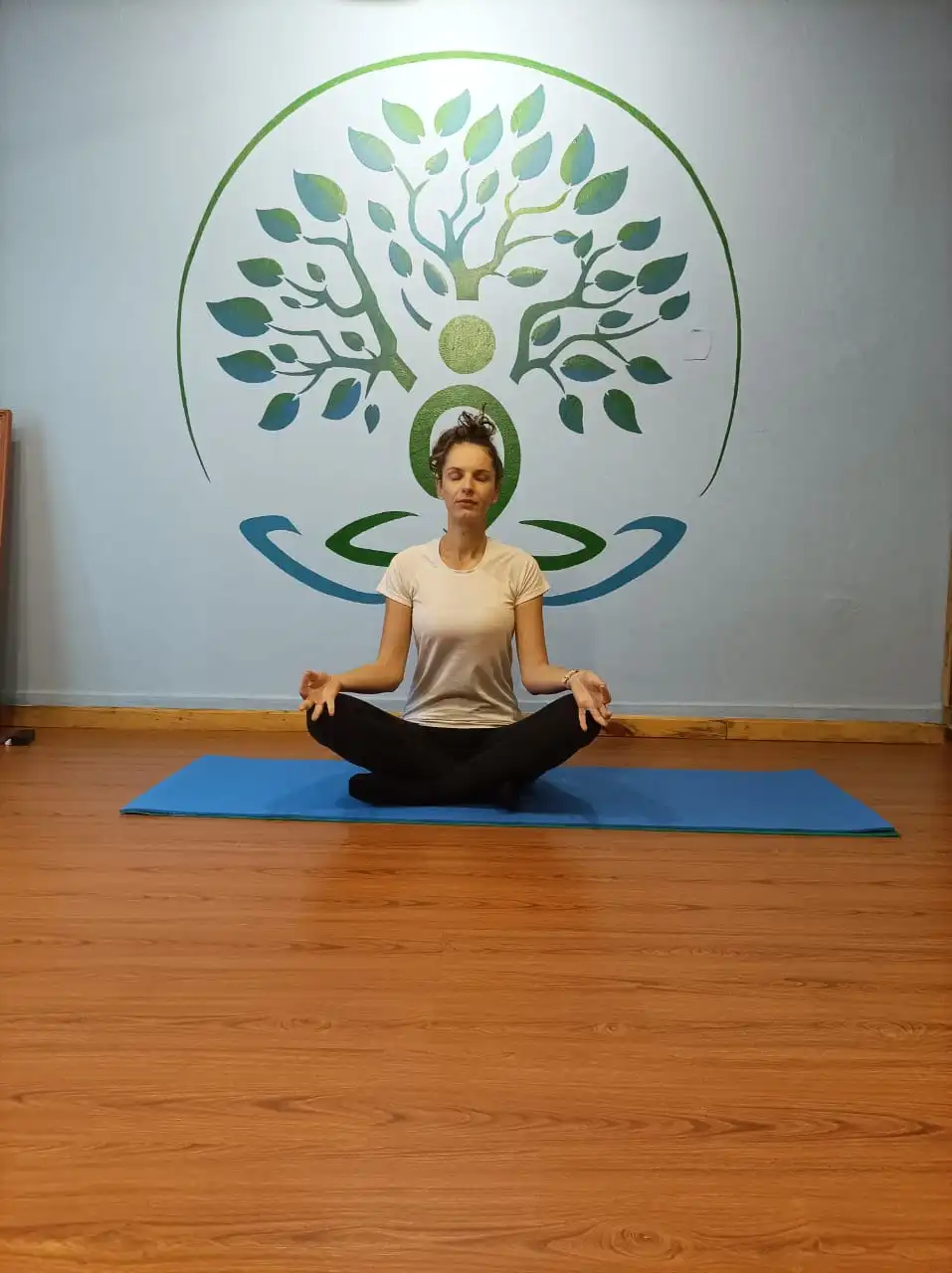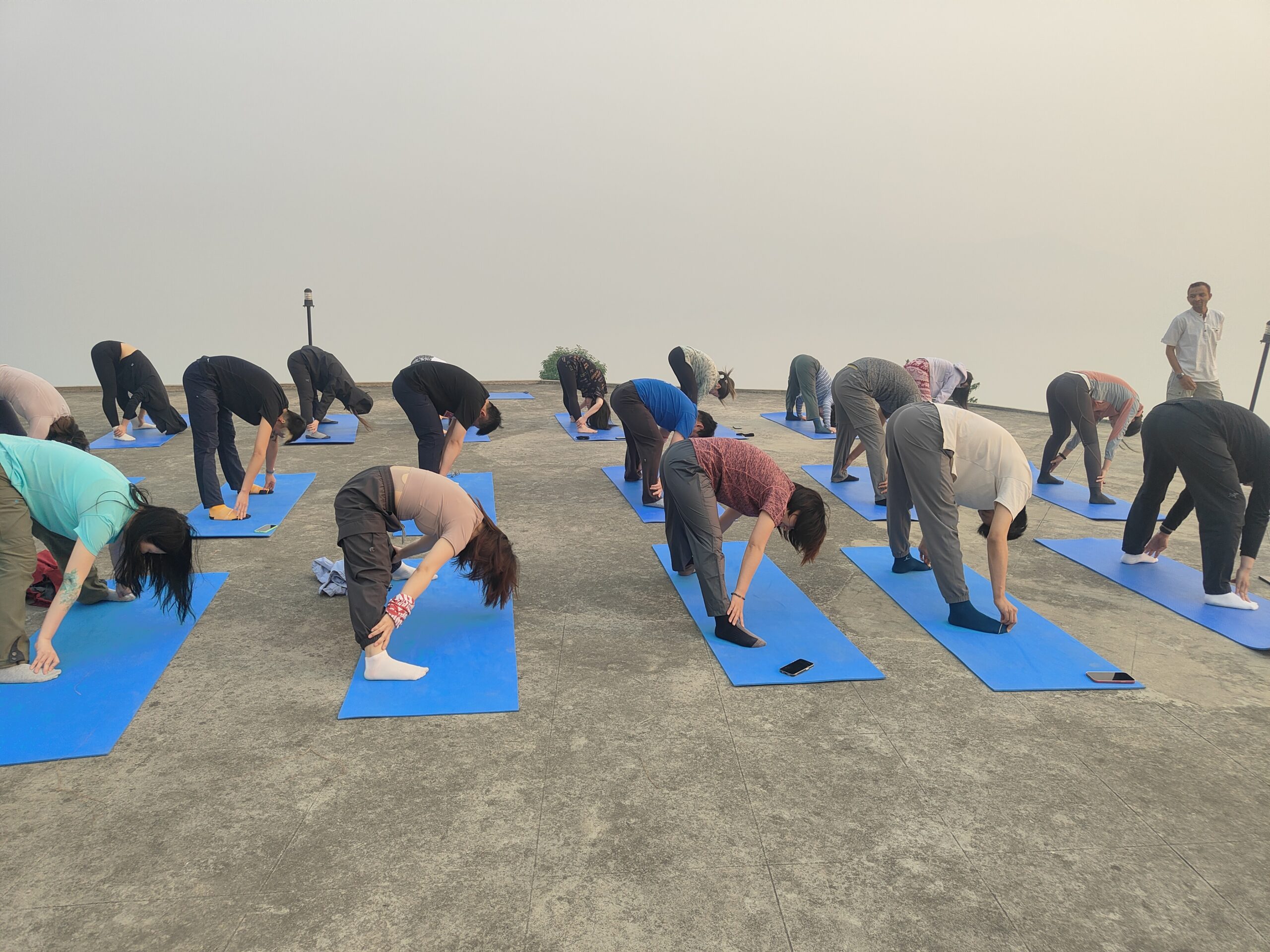Table of Contents
Introduction
Regularly practicing yoga to relax and meditation brings about mindfulness contributing to body stress release. The need to find ways to unwind has increased due to the hectic lifestyle that includes pressure from work, personal obligations, and frequent use of mobile phones. Stress relief techniques relate to regular yoga and transcendental meditation that help in calming the mind, easing the body, and promoting overall well-being.
“संतोषादनुत्तमः सुखलाभः।”
“Santoshād anuttamah sukha-labhah.” ( ref Yoga Sutras of Patanjali ( C2, V42)
Translation: “From contentment, unsurpassed happiness is obtained.”
Meaning: Practicing Santosha (contentment) as a yogic principle helps individuals focus on gratitude and satisfaction, reducing stress caused by dissatisfaction or striving.
The top stress relief techniques of yoga are discussed below.
Stress and Yoga
Stress is the main cause of anxiety, high blood pressure, digestive problems, and poor sleep which can be overcome with regular yoga practices and meditation promoting relaxation, mental clarity, and balance. The designated yoga postures ensure mental health improvement promoting a sense of inner peace. The combination of various postures, breathing exec
Breathing techniques ( Pranayama)
Controlled breathing techniques, mainly termed “Pranayama” involve the regulation of breath aids in balancing the body’s energy and calming the mind. The most popular breathing techniques are briefly introduced below:
1. Deep Belly Breathing
This technique involves breathing deeply into the belly rather than in the chest. It is also called diaphragmatic breathing. Such deep inhales and exhales are responsible for activating the parasympathetic nervous system promoting relaxation.
2. Alternate Nostril Breathing ( Nadi Shodhana)
This simple yoga practice is responsible for balancing the energy channels in the body, reducing stress, and enhancing mental clarity.
3. 4-7-8 breathing
This involves inhaling for a count of four, holding the breath for a count of seven, and exhaling for eight counts, hence the name of the technique.
Physical postures ( Asanas)
While breathing exercises chiefly reduce stress, physical postures called Asanas contribute to promoting relaxation by helping to stretch and strengthen the muscles, release tension, and increase flexibility. Some of the most effective Yoga Asanas for stress relief are as follows
- Child’s Pose ( Balasana) – It is a gentle resting pose that allows the body to relax while the mind releases tension. In this posture, the forehead is lowered on the mat, and arms are stretched out in front which activates a sense of grounding and calmness.
- Cat-Cow Pose ( Marjaryasana- Bitilasana) – It is a sequence of movements alternating the arching and rounding of the spine focused on releasing tension in the back and neck synchronizing the breath simultaneously fosters relaxation.
- Forward Fold ( Uttanasana) – It is a pose where the head and neck are let to hang heavy in a forward bend focused to release tension in the back, neck, and shoulders.
- Legs up the wall ( viparita Karani) – It is a restorative pose involving the legs propped up against a wall while lying on the back promoting circulation. This pose relieves tension and allows the body to reach a deep state of relaxation.
- Saasna ( Corpse Pose) – It is the ultimate relaxation pose of yoga practiced at the end of the session, where one needs to lie flat on the back with arms on the sides, allowing the body and mind to rest deeply. It fosters calmness and rejuvenation.
Meditation for stress reduction
Meditation is all about the mind and soul aiming to practice focus and cultivate a sense of inner peace for stress reduction. Some of its key forms are briefly discussed below.
- Mindfulness Meditation – It comprises practicing to focus on the present moment, using a non-reactive awareness helping in detachment from stress-inducing thoughts and emotions.
- Guided meditation – It involves following the instructions of the Guru to achieve relaxation and the ability to visualize peaceful scenarios to reduce stress and anxiety.
- Loving-Kindness Meditation ( Metta) – It is all about fostering feelings of compassion and love that involves spreading well-wishes and kindness to oneself and others, which simply promotes emotional well-being.
Conclusion
Yoga refers to not only physical practices, but it is a holistic approach that encompasses the mind, body, and soul. Regular yoga practices promote relaxation, mental clarity, and balance. The above-mentioned top stress relief techniques explaining in detail how yoga can help an individual to relax should help manage chronic stress. Get in touch with the highly qualified and experienced instructors of Bodhidham for professional and effective consultation relating to yoga and meditation.







